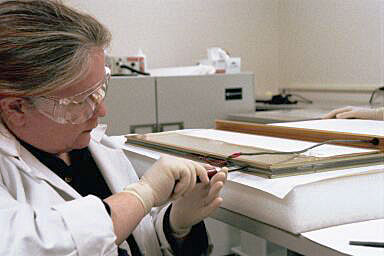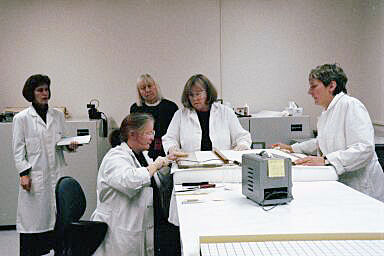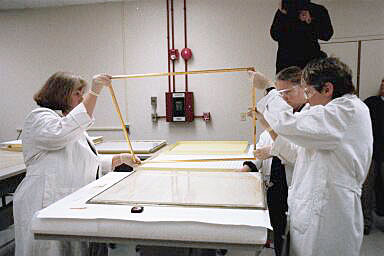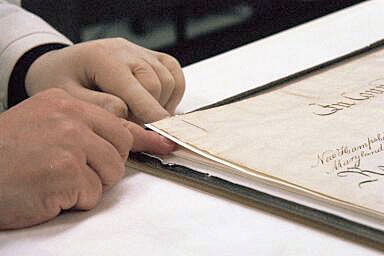
Press Kits: Charters of Freedom Re-encasement Project Photo Gallery
The National Archives and Records Administration (NARA) recently took a major step forward in its program to preserve
the Charters of Freedom-the Declaration of Independence, the U.S. Constitution, and the Bill of Rights. On October 20,
1999, the bronze and glass sealed encasement, fabricated in 1952 by the National Bureau of Standards (now the
National Institute for Standards and Technology, NIST), housing the Transmittal Page of the U.S. Constitution,
was carefully opened and the parchment document was removed. Components of the original encasement were reserved
for further study and analysis. The Transmittal Page has undergone examination and conservation treatment in
preparation for re-encasement in a new state-of-the-art titanium, aluminum, and glass sealed box.




